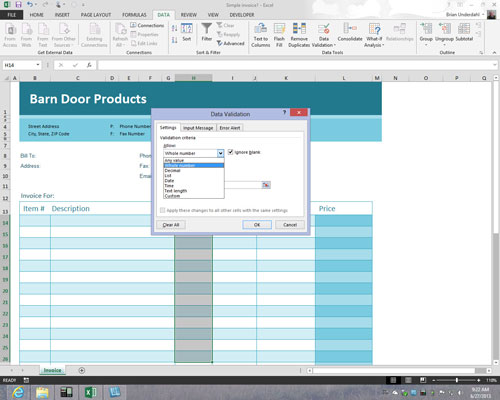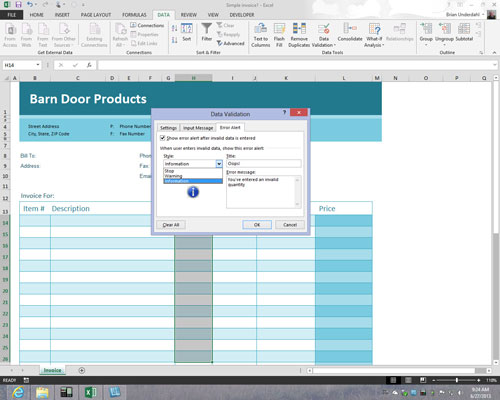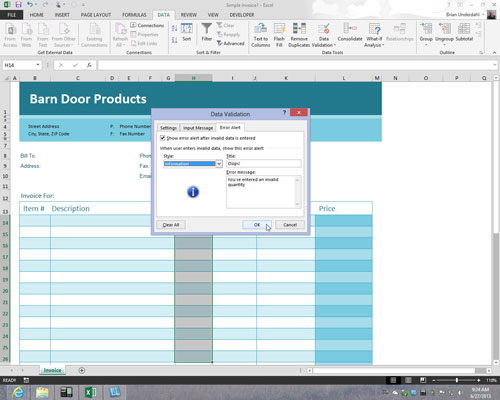By establishing data-validation rules in Excel 2013, you can greatly decrease the chances of errors being entered, and the rules aren’t particularly hard to set up.
Select the cell or cells that need a rule and then click Data Validation on the Data tab of the Ribbon.

Select the cell or cells that need a rule. You see the Settings tab of the Data Validation dialog box.
On the Allow drop-down list, choose the category of rule you want.

Enter the criteria for the rule. What the criteria is depends on what rule category you’re working in. You can refer to cells in the worksheet by selecting them. To do that, either select them directly or click the Range Selector button and then select them.
On the Input Message tab, enter a title and input message.

You can see a title and input message. The title appears in boldface. Briefly describe what kind of data belongs in the cell or cells you selected.
On the Error Alert tab, choose a style for the symbol in the Message Alert dialog box, enter a title for the dialog box, and enter a warning message.

The title you enter appears across the top of the dialog box, and the message appears beside the symbol.
Click OK.

To remove data-validation rules from cells, select the cells, go to the Data tab, click the Data Validation button, and on the Settings tab of the Data Validation dialog box, click the Clear All button, and click OK.





